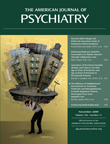In the early years of my training, the field of psychiatry underwent a cataclysmic transformation from a psychoanalytical to a neurobiological perspective. I remember heated arguments during the changing of the guard—analysts insisting that an understanding of the individual’s personal dynamics were critical to change while the young Turks belittled this outmoded and therapeutically fruitless approach. The expectations for the new era were unequivocal—psychotropic medications promised relief from the misery of psychosis, anxiety, and depression, and developing neuroimaging techniques would uncover the pathophysiology of mental disorders and guide their diagnosis and treatment. Although the biological approach has since yielded dramatic advances in both the biologic underpinnings and treatment of psychiatric disorders, many of the hopes and expectations of this approach remain unfulfilled.
Our understanding of the addictive disorders has followed a somewhat different path, albeit with similar conceptual dissonance. Until the publication of DSM-III in 1980, alcohol and drug dependence were classified as personality disorders and generally considered a by-product of non-substance-related psychopathology. Although originally proposed by Benjamin Rush in 1784, it was Bill W. and Alcoholics Anonymous that began to popularize the notion of addiction as a medical disorder. The description of the brain reward pathways in the 1950s initiated an explosion in our understanding of the neurobiologic mechanisms underlying reward and addictive processes. Treatment strategies have since focused on 12-step, cognitive-behavioral, and motivational enhancement techniques and/or medications. As experienced with other psychiatric disorders, the individual intrapsychic aspects of the addiction were often ignored, and coexisting psychopathology was considered a consequence, not a precursor, of substance use.
For 30 years, an often lone voice encouraging the examination of the psychodynamic processes in addicted patients has been Edward J. Khantzian. In Understanding Addiction as Self Medication, Dr. Khantzian and his long-time colleague Mark J. Albanese explain and enlarge upon the “self-medication hypothesis” and posit that intrapsychic disturbances and affect dysregulation are a primary precipitant and perpetuator of substance use. Furthermore, the self-medication hypothesis proposes that the pain and suffering provoking the initial substance use should be addressed as an integral part of treatment. Although the consideration of comorbid psychiatric problems is now the norm, this is a relatively recent development and has been influenced, at least in part, by Dr. Khantzian. Yet even the current embrace of “dual-diagnosis” patients does not attend to the primary theme of the self-medication hypothesis: namely that substances are used as adaptive attempts to alleviate emotional suffering and repair self-regulatory deficiencies. As noted by the authors, “the self-medication hypothesis of addiction is rooted in the inner experience of those who suffer from it,” and exploring an addict’s reasons for using a substance can be a crucial path toward recovery. This approach continues to be generally unpracticed in most addiction programs, as treatment is typically provided in a group setting, and even individual therapy seldom considers the intrapsychic meaning of the substance use itself. Missing from Understanding Addiction, unfortunately, is empirical evidence supporting the effectiveness of the self-medication hypothesis psychodynamic approach (although the utility of treating coexisting psychopathology is now well documented).
The second major supposition of the self-medication hypothesis is that a patient’s specific drug of choice is reflective of their need to self-medicate a particular feeling state. Opioids are chosen for their ability to suppress aggression and rage, stimulants to escape depression and a feeling of emptiness, and sedatives and alcohol to undo inhibition. The authors have developed these formulations based on their own clinical experience and offer multiple vignettes. While one’s own experience should not be ignored, new information is often selectively screened to further support one’s own perspective. Although the authors attempt to address this deficit, the chapter devoted to empirical evidence is wanting. Many of the studies discussed in this chapter refer to Khantzian and colleagues’ own anecdotal experience, and the true empirical studies referenced offer little support for an affect-driven drug choice. Not mentioned is the extensive literature revealing a complex of genetic, behavioral, and environmental factors that increase the risk of substance use in at-risk youths but do not predict a specific drug of use. This aspect of the self-medication hypothesis may therefore guide the reader to search for conflicts and affects that are absent and to ignore potent pathology that does not conform to the proposed paradigm. The book itself includes anecdotes that are not consistent with this aspect of the self-medication hypothesis (i.e., Loretta becomes addicted to prescription opioids as a way to cope with daily stressors, not to suppress anger, pp. 112–113).
Understanding Addiction is an easy and often engaging read and will primarily be useful for patients, families, and perhaps addiction therapists. Multiple case study vignettes are provided to assist readers’ comprehension, although these case studies are often too brief to provide an in-depth understanding of the interplay between a patient’s intrapsychic dynamics and their drug use. To the authors’ credit, they emphasize both the importance of other contributions to addictive disorders, such as genetic, social, and family influences, and the need to utilize a wide range of treatment approaches, including agonist therapies and other medications. In addition, nicotine and marijuana are given substantial attention. Neurobiological considerations are discussed throughout the book, if somewhat haphazardly, although the authors consider the neurobiological and self-medication hypotheses as either/or explanations, as opposed to compatible and overlapping. It would have been a powerful argument, for example, if the authors had offered a biologic foundation for the effects of specific drugs on identified affect states.
In a disease commonly approached with biologic reductionism, cognitive-behavioral simplicity, or 12-step dictums, perhaps the most important contribution of Understanding Addiction is to remind us of the distinct experience, personal history, and intense suffering of the addicted patient.

